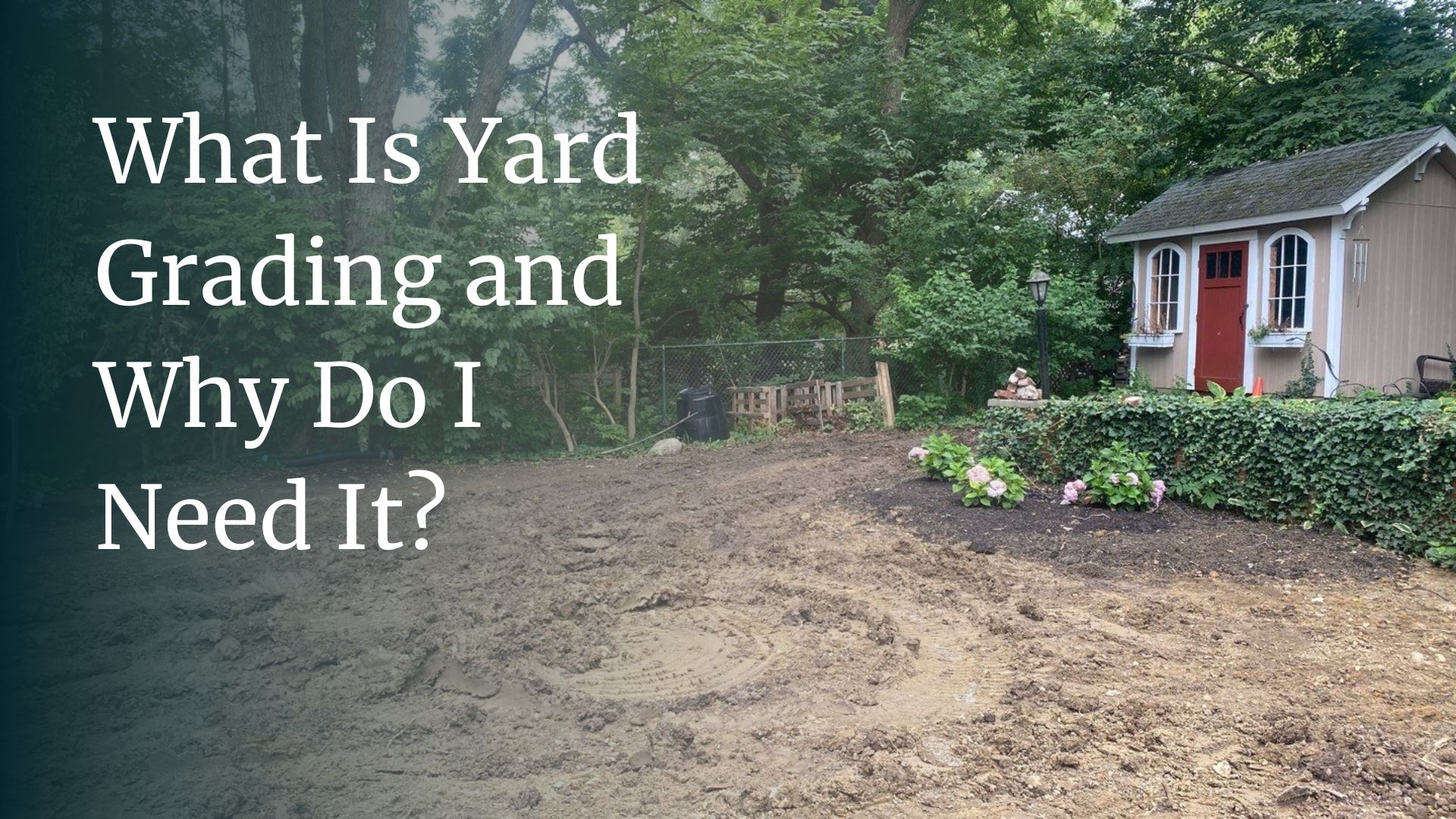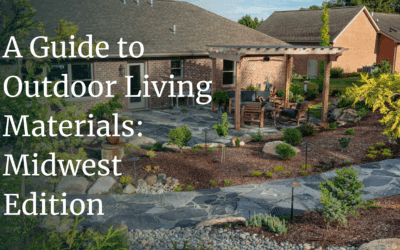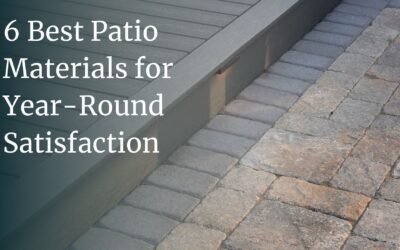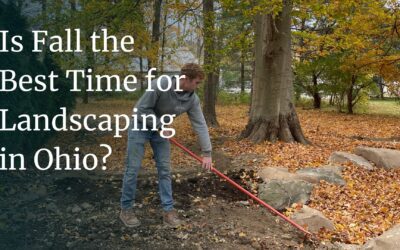Have you ever noticed standing puddles in your yard after a rain? Or maybe you’ve seen water pooling close to your home’s foundation? These aren’t just minor inconveniences; they’re often signs of improper yard grading.
Yard grading is the strategic shaping of the land around your home to control how water flows. It’s a fundamental step that creates a subtle, engineered slope directing water away from where it might cause damage and toward where it can drain safely.
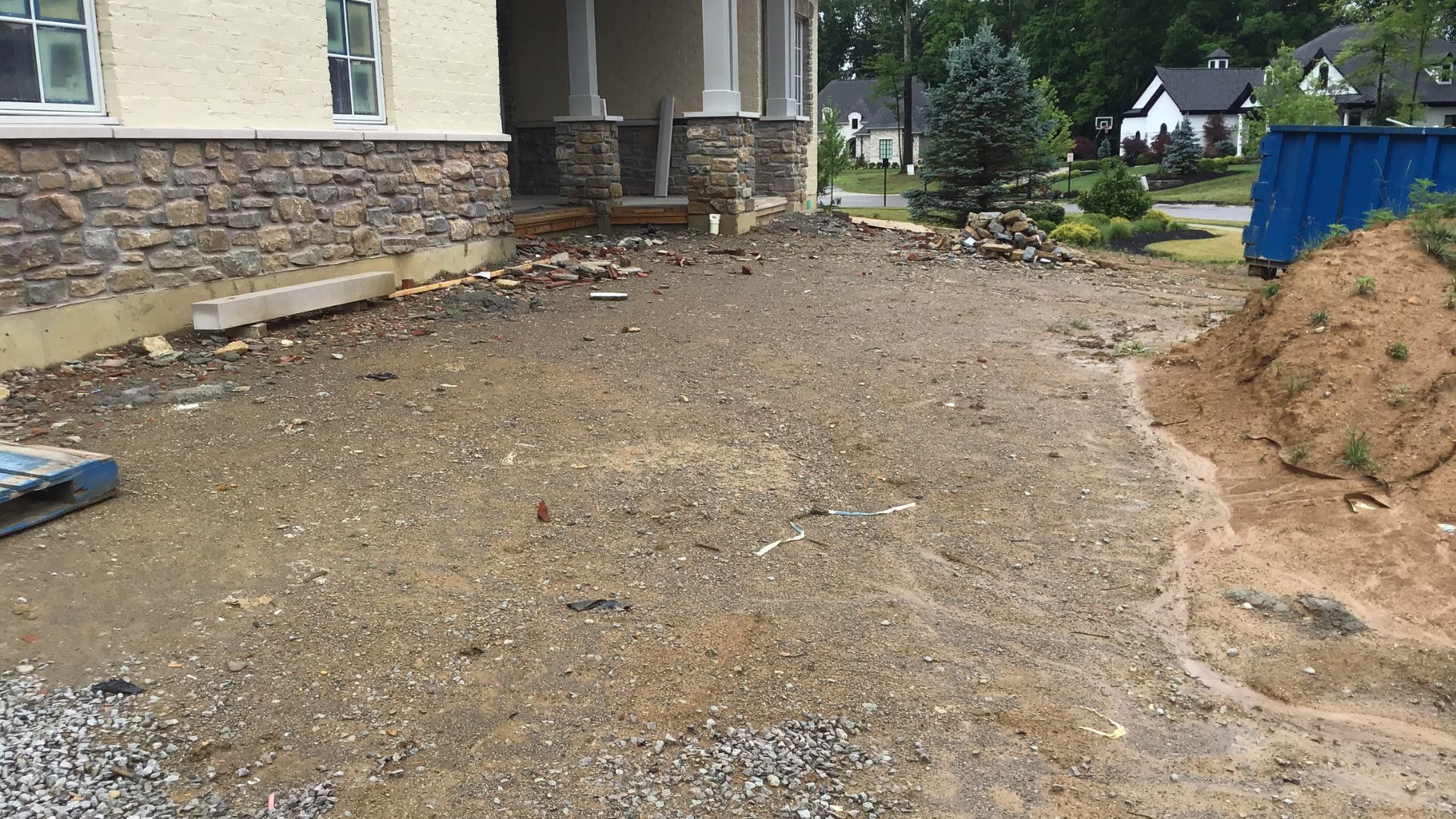
Grading a yard requires a professional team and lots of knowledge. At Site Group, we know these kinds of investments are important undertakings. We have more than 25 years in the business, and many level yards to show for it.
In this guide, we’ll explain exactly what yard grading is, how professionals tackle it, why it’s a crucial service for many homeowners and what benefits—and potential drawbacks—come with doing it (or not doing it).
What Exactly Is Yard Grading?
At its core, yard grading is the process of altering the elevation or slope of the ground. Its primary purpose is to manage water. This means preventing water from pooling in undesirable areas, directing it away from your home’s foundation, and ensuring it doesn’t cause erosion or damage to your landscape.
There are typically two main types of grading involved in a project:
- Rough grading: This is the initial, larger-scale movement of earth to establish the main changes in elevation and overall slopes. It sets the general contours of your yard.
- Finish grading: This involves fine-tuning those slopes, smoothing out the surface to create a precise, even base. This final step prepares the ground perfectly for laying sod, planting or installing hardscaping like patios and walkways.
The goal with yard grading is always to create a stable, well-drained environment that supports the health of your home and landscape.

How Is Yard Grading Done?
While the concept of yard grading might seem simple, the execution requires specialized knowledge, equipment and precision. Here’s a look at how professionals approach the process.
Assessment and Planning
The first step is to conduct a thorough site survey. Professionals use tools like transit levels, laser levels and sometimes even advanced 3D modeling to map a property’s existing elevations. This allows them to identify any problematic slopes, and analyze the soil type. In Dayton and the Miami Valley, our soil tends to be very clay-heavy.
This detailed assessment helps them design a precise yard grading plan that specifies exact slopes (e.g., typically a minimum of 6 inches of fall within the first 10 feet away from a home’s foundation), drainage paths and any necessary features like swales (shallow channels) or berms (raised mounds) to direct water flow.
Rough Grading
Once the plan is in place, heavy machinery like skid steers and excavators are brought in for the rough grading phase. This is where large amounts of soil are moved to establish the major changes in elevation and the overall general slopes determined in the planning stage. This step essentially sculpts the basic shape of your future yard.
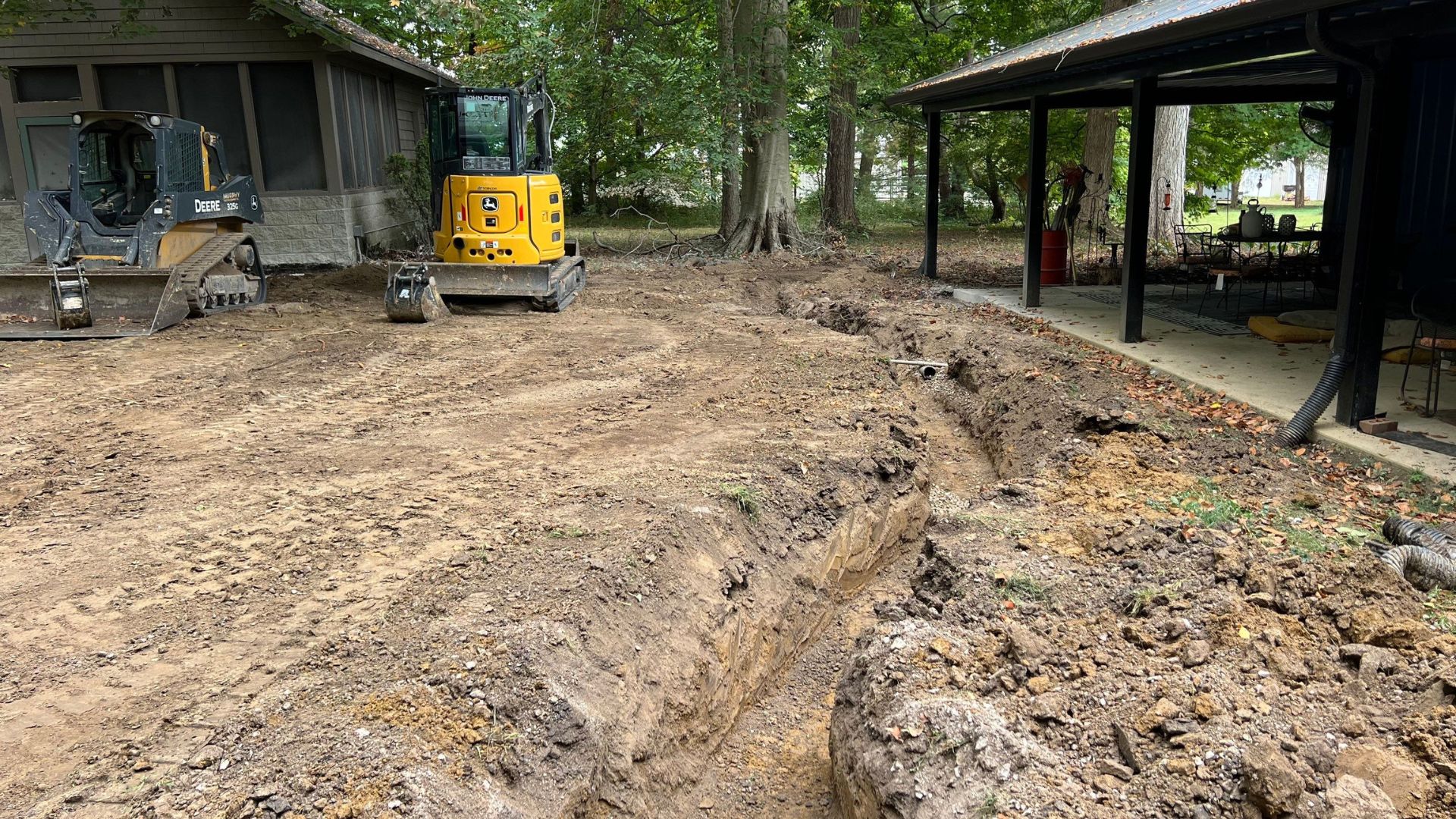
Fine/Finish Grading
After the rough shaping, the fine or finish grading begins. This stage involves meticulous work, often with smaller equipment or hand tools, to achieve the exact, precise slopes and a smooth, even surface. This is critical for ensuring perfect drainage solutions and providing a stable base for any subsequent installations, from a new lawn to an elaborate patio.
Compaction (When Necessary)
In areas where structures like patios, walkways, driveways or even building additions will be placed, the newly graded soil may need to be compacted. This process increases the soil’s density, preventing future settling, cracks and uneven surfaces that could compromise the integrity of your hardscaping.
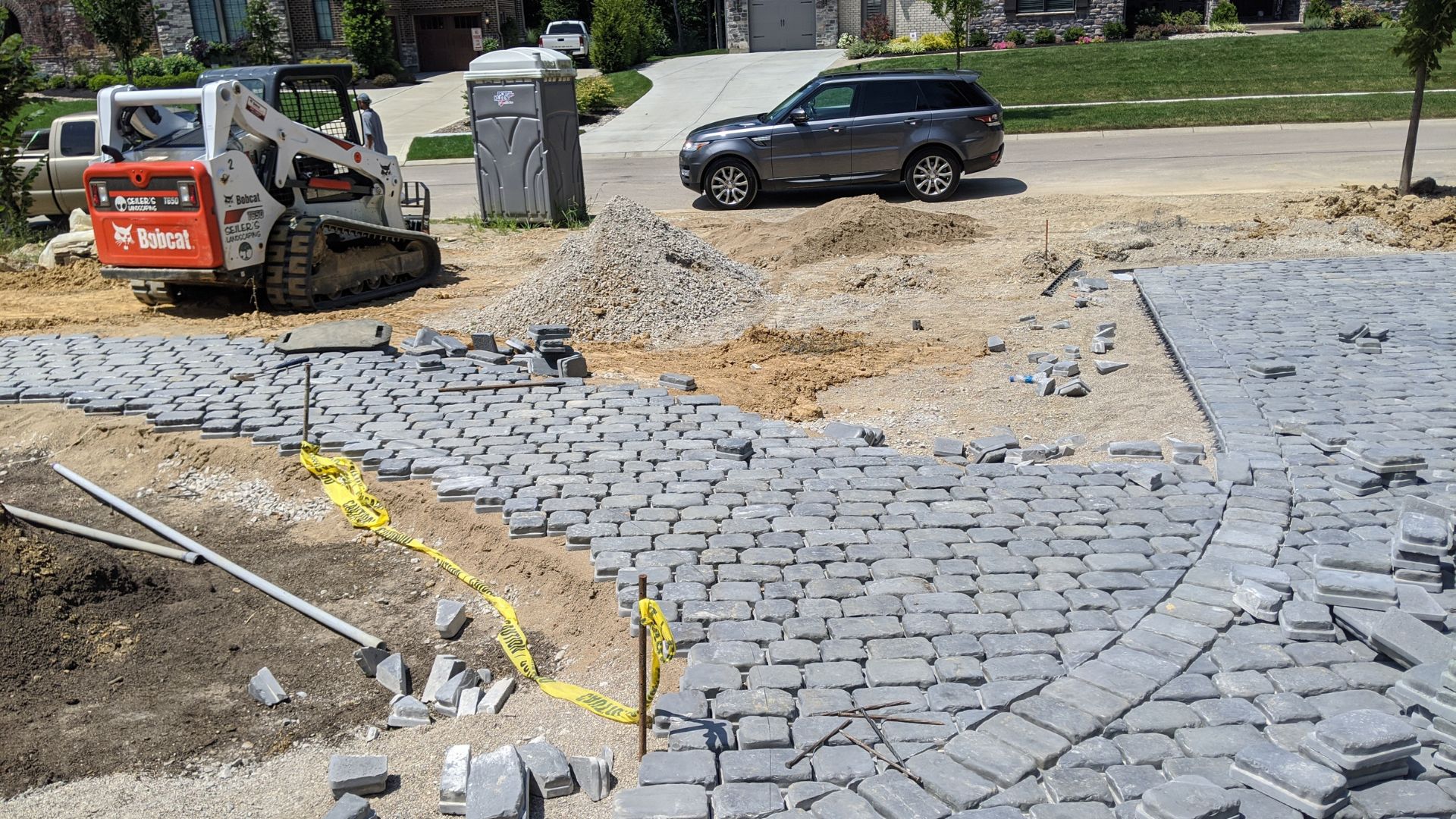
Post-Grading Restoration
Once the yard grading is complete, the disturbed areas of the yard will need to be restored. This typically involves adding a layer of nutrient-rich topsoil, followed by hydroseeding (spraying a mixture of seed, mulch and fertilizer) or laying sod. This step not only brings a landscape back to life but also helps to stabilize the newly graded slopes and prevent soil erosion.
For optimal results in our region, early August is often an ideal time for reseeding. This will allow the new grass to establish before cooler fall temperatures. Alternatively, for quicker establishment and a lush look, sodding can be done in early September.
Why Do You Need Yard Grading? Real-World Scenarios
If you’re thinking about a backyard landscape makeover, you might be wondering if yard grading is truly necessary for your property. This is understandable, as the process can be expensive and time-consuming. However, the answer is often yes, especially if you experience any of these common problems or are planning specific types of outdoor projects.
Scenario 1: Water Collects Near Your House and/or Seeps into Your Basement
After heavy rain, you see puddles forming right next to your home’s foundation, or worse, water seeping into your basement or crawl space. This is a critical issue that can lead to costly structural damage.
How Yard Grading Solves This Problem
Professional yard grading creates a consistent, gentle slope away from your house, effectively directing rainwater and runoff safely away from your foundation. Your basement stays dry and you can avoid the stress and expense of future foundation repairs. Your home’s structural integrity will be protected for years to come.
Scenario 2: Your Lawn Is Always Soggy or Has Standing Puddles
Certain areas of your lawn remain wet for days after it rains. These spots become muddy and unusable. The standing water attracts mosquitoes and makes your yard experience unpleasant.
How Yard Grading Solves This Problem
By establishing even, subtle slopes across your lawn, professionals ensure water drains properly, either naturally or into carefully designed drainage solutions. The long-term payoff? A usable lawn immediately after rain. No more muddy spots. Green space perfect for play, entertaining or simply relaxing.
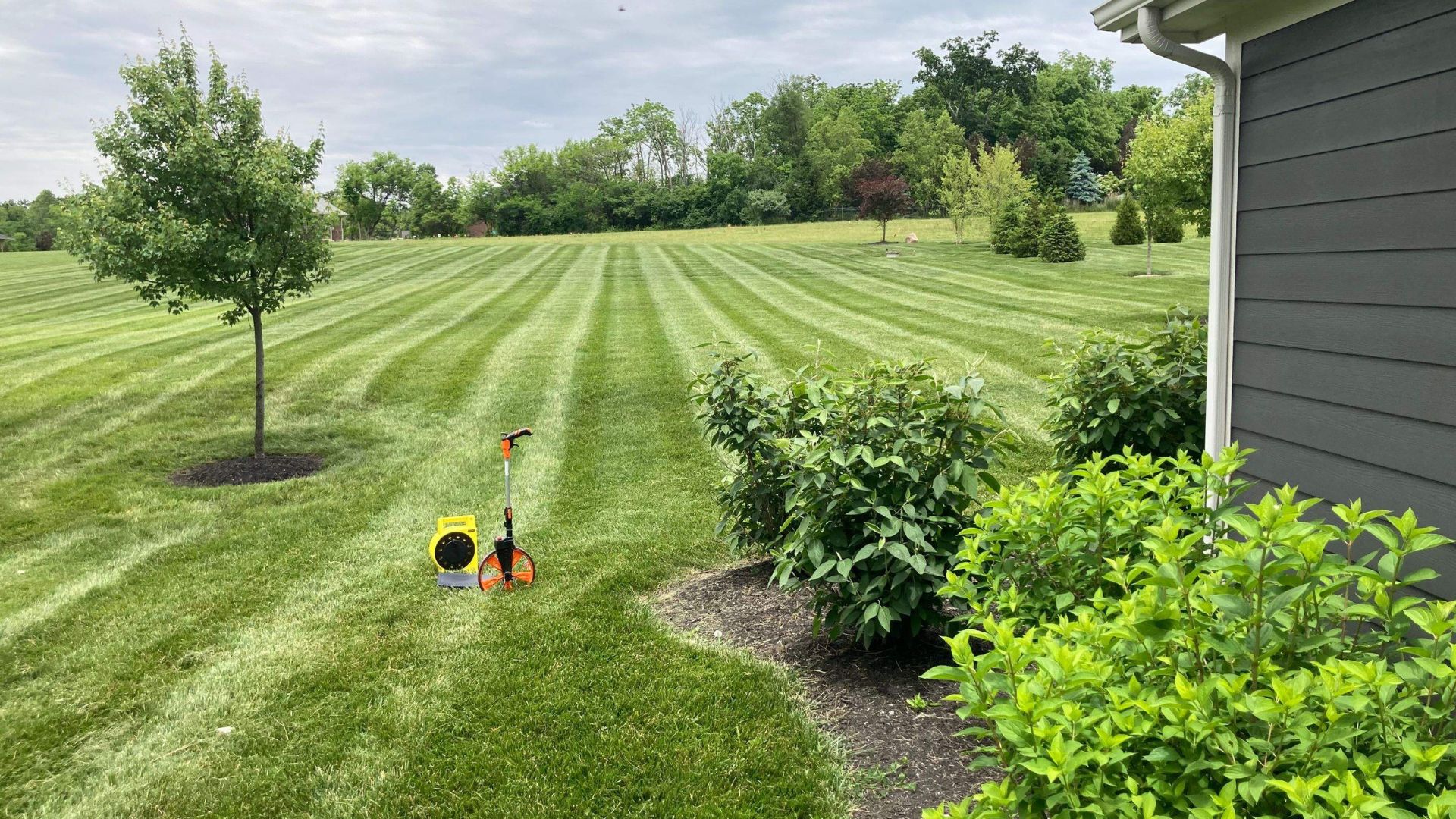
Scenario 3: You’re Experiencing Soil Erosion or Bare Spots
During medium-to-heavy storms, rainwater rushes across your yard like a tide. This washes away valuable topsoil, in turn exposing plant roots, creating unsightly gullies or leaving patches of bare dirt. Your yard is being stripped bare by water. Without that topsoil, planting next year will be difficult. Your existing plants will have a hard time, too, as will any plants or trees with exposed roots.
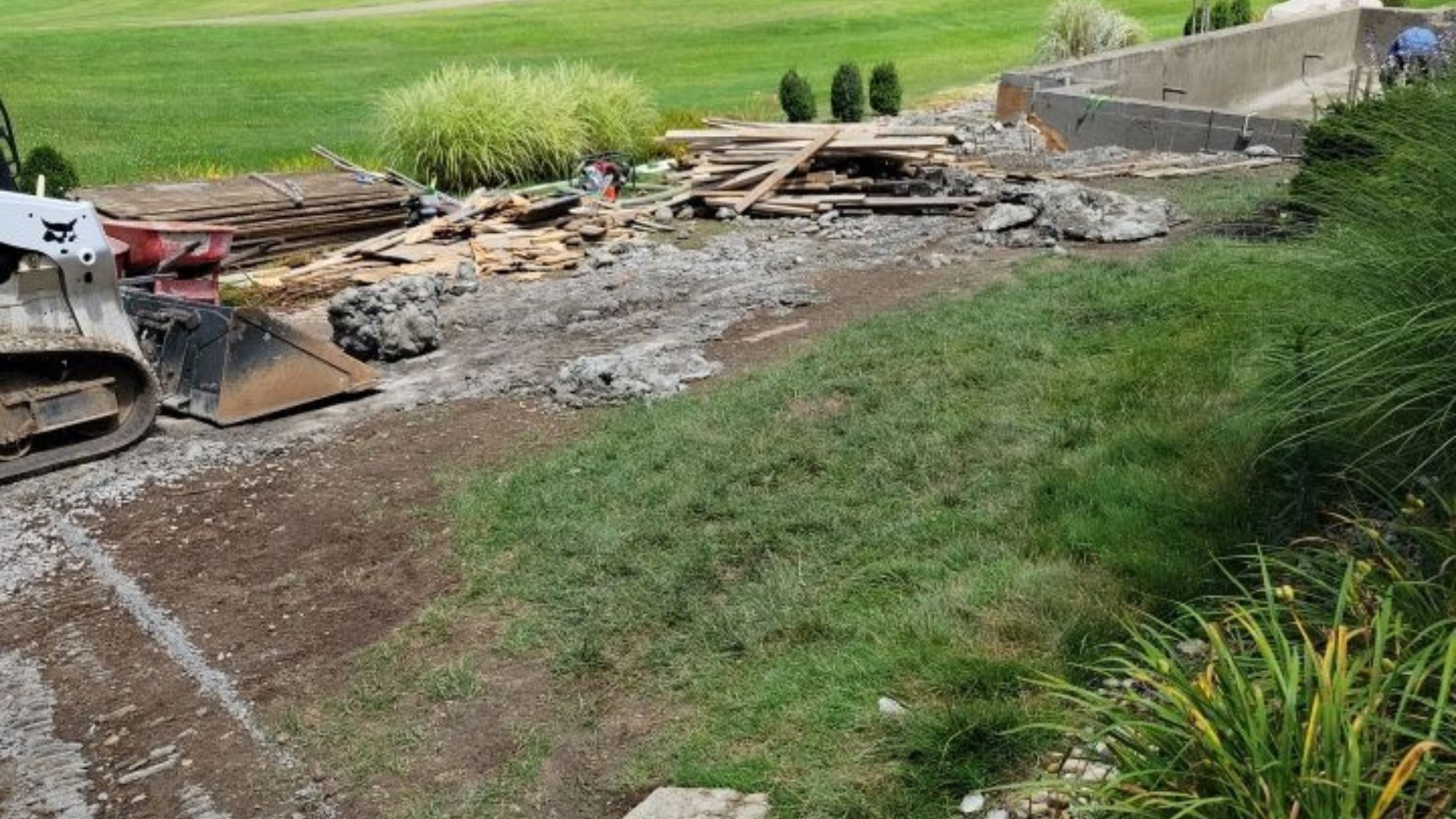
How Yard Grading Solves This Problem
Proper grading controls the speed and direction of water flow. This prevents it from carrying away your precious soil. You can preserve your rich topsoil and the beauty of your existing landscape. Your plant beds will remain healthy and stable, free from the damaging effects of erosion.
Scenario 4: You’re Planning a New Patio, Walkway or Outdoor Structure
You want to revamp your landscape. But the existing ground is really uneven. This makes it impossible to install a stable, level patio, walkway, shed or outdoor kitchen.
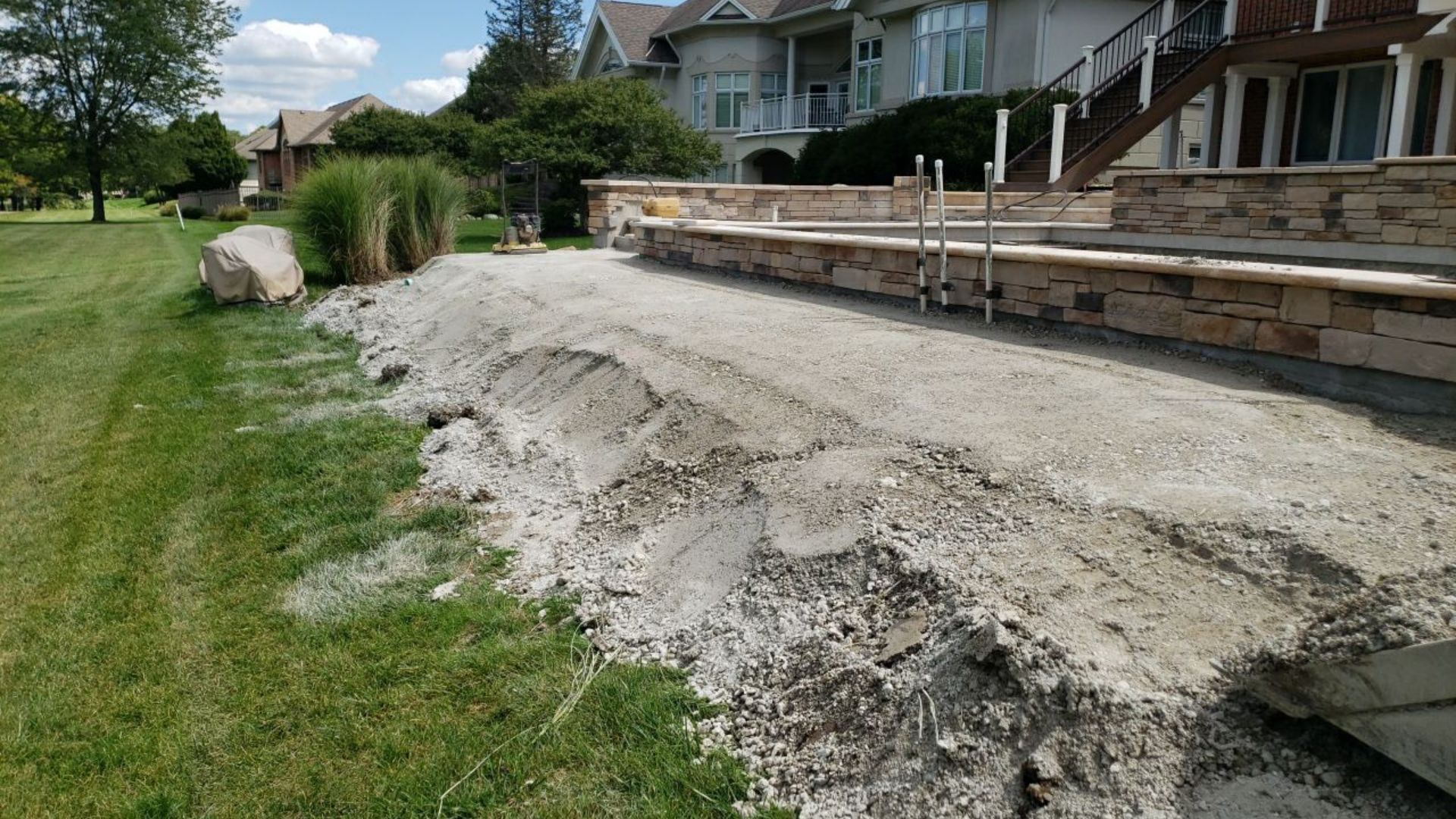
How Yard Grading Solves This Problem
Grading creates a perfectly level and compacted base for all your high-end hardscaping elements, ensuring they are stable and safe. You can build the outdoor living space of your dreams on a solid foundation. Your new patio will be level, safe and built to last.
Scenario 5: Your Yard is Uneven, Sloping or Difficult to Use
You know your yard isn’t up to par. It could be challenging to mow. Maybe there are hazardous dips and bumps. Or maybe it just isn’t functional for your desired activities.
How Yard Grading Solves This Problem
Yard grading levels out problematic areas, creates gentle, manageable slopes, or terraces steep hillsides into usable sections. Transform an unmanageable, challenging yard into a truly functional, beautiful space that’s easy to maintain. Thanks to grading, your yard is safe for everyone, and perfect for your family’s activities.
Local Landscape Challenges With Yard Grading in Dayton and the Miami Valley
The Miami Valley, including Dayton, is located in a region with specific geographical and geological characteristics that can present unique challenges for yard grading projects. Our region’s distinct topography and prevalent soil types can significantly complicate water management and overall property stability.
A landscaping team that understands these challenges is key to successful drainage and landscape design.
Hilly and Varied Topography.
Properties on steep slopes are prone to significant soil erosion if not properly graded. Water runoff can be very fast, leading to washout of topsoil, undermining of foundations and damage to landscaping. Grading here often involves terracing, retaining walls and engineered swales to slow and direct water.
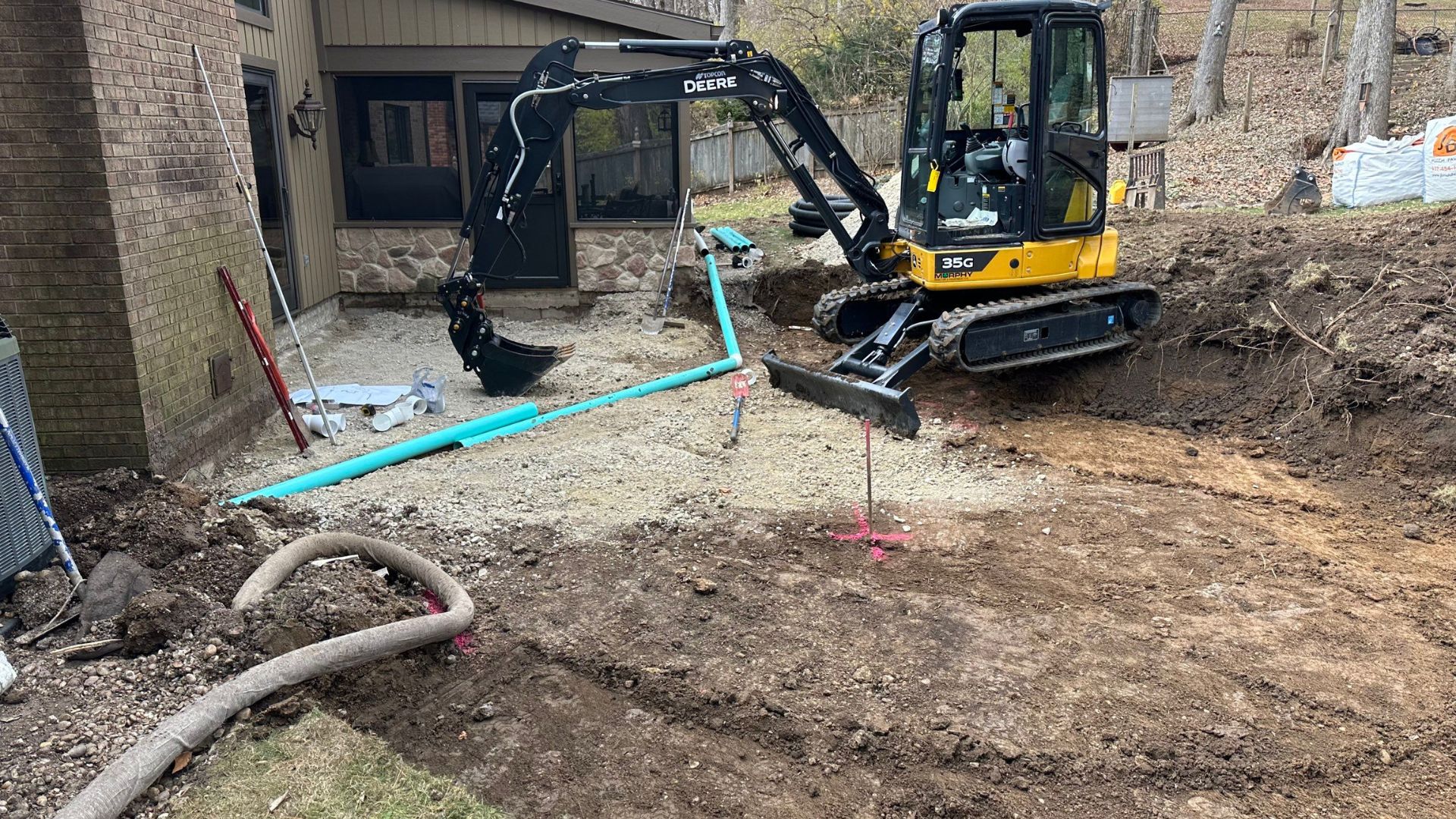
Conversely, some areas might be naturally low-lying or in depressions where water naturally collects. Without proper grading, these become persistent soggy spots, or even mini-ponds, especially with the prevalence of clay soils.
Existing Infrastructure and Development
In established cities, properties often have existing homes, hardscaping (patios, driveways), and underground utilities.
In older, more densely populated neighborhoods, lot sizes can be smaller, making it challenging to achieve the recommended 6-inch drop over 10 feet away from a foundation. Creative drainage solutions like French drains or channel drains become even more critical.
Extensive underground utilities (sewer, water, gas, electric) require careful planning and execution to avoid damage during excavation and grading.
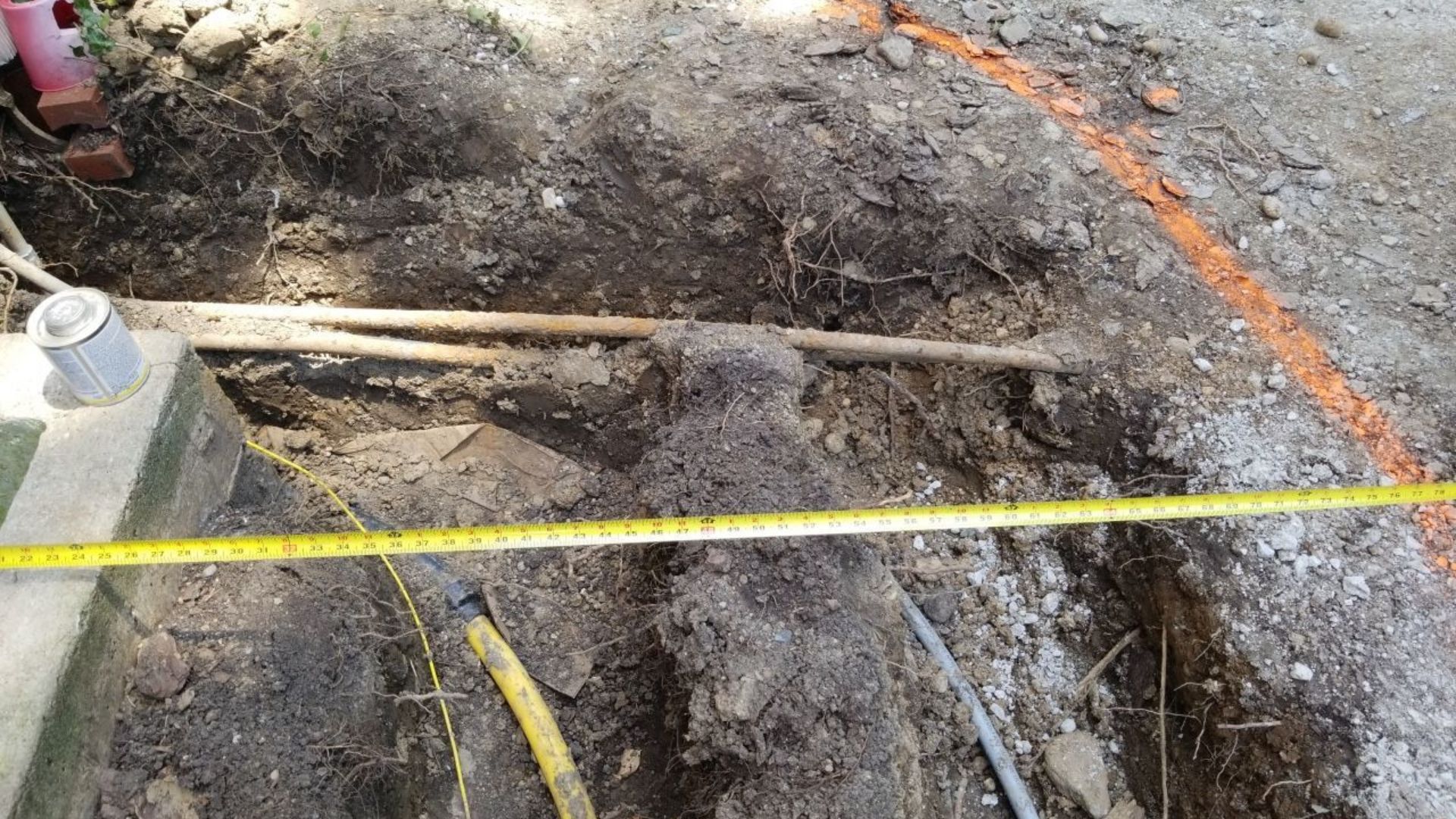
Heavy Rainfall and Freeze-Thaw Cycles
Ohio experiences significant rainfall throughout the year, including heavy storm events. The region also undergoes freeze-thaw cycles in winter.
Heavy rains can overwhelm inadequate grading, leading to widespread pooling or uncontrolled sheet flow across properties. Consistent moisture around foundations due to poor drainage increases hydrostatic pressure, a major cause of basement leaks and foundation cracks, especially during freeze-thaw cycles where expanding ice can exert immense force.
Clay soils, when saturated and then frozen, can expand and contract, causing sidewalks, patios and even foundations to “heave” or shift. Proper grading helps manage moisture levels to mitigate this.
Specific Soil Issues in Dayton and the Miami Valley
The primary soil challenge in both Dayton and the Miami Valley revolves around the widespread presence of clay-heavy soils. These soils are a legacy of glacial activity in the region.
1. High Clay Content / Poor Drainage
The Miamian Series (Ohio State Soil) is a prominent soil series in western Ohio, including the Miami Valley. Miamian soils are deep and moderately well-drained, developed from glacial till (a mixture of particles ranging from boulders to fine clay) and enriched with wind-blown silty material called loess in the surface layers.
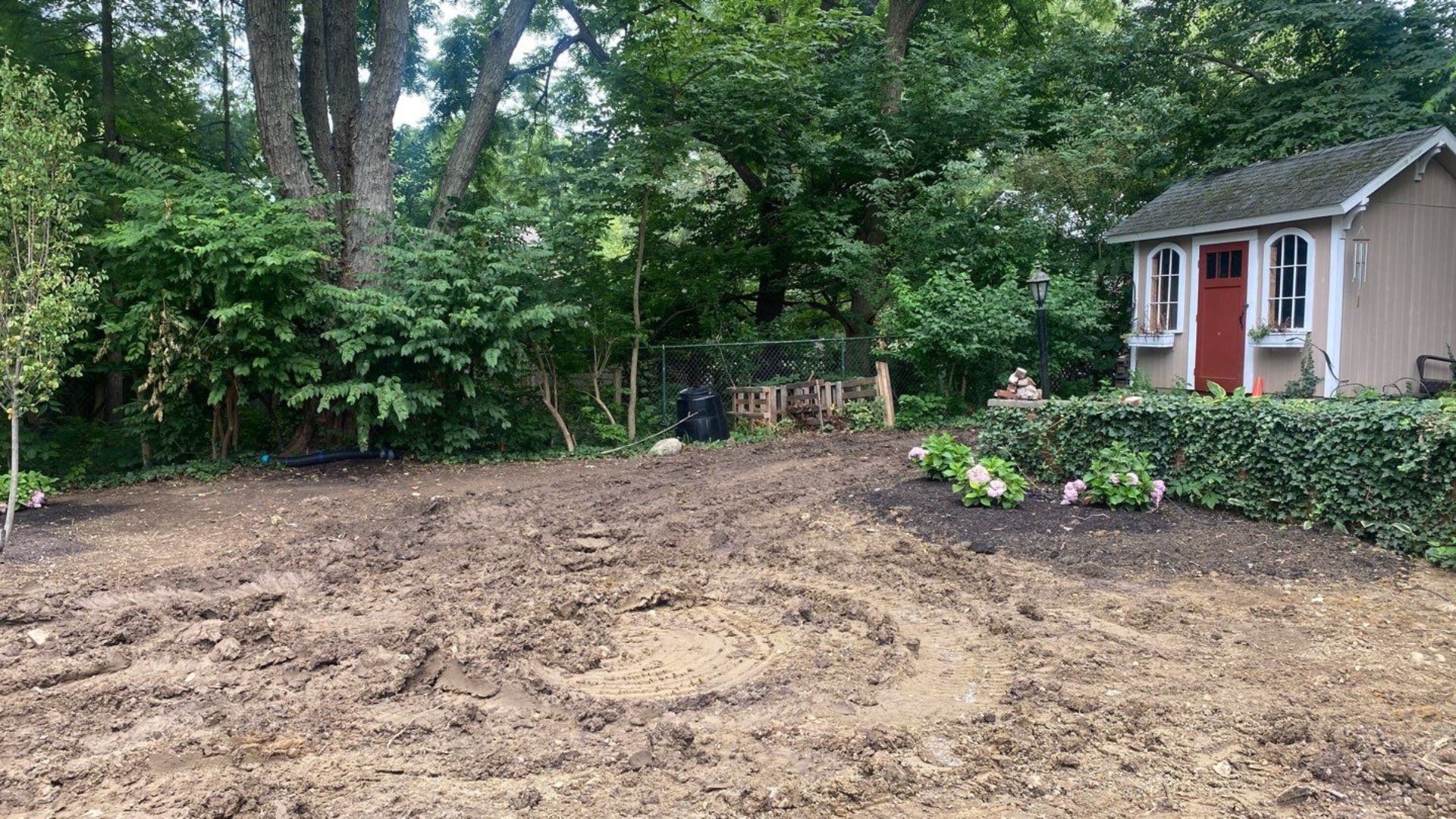
The “Dayton series” soils are explicitly classified as “very deep, poorly drained soils” that formed in silty and clay-ey glaciolacustrine deposits. They are notorious for very slow permeability and often have a perched water table (a water table that sits above a less permeable layer) from November to April.
Clay particles are very small and pack together tightly, leaving little space for water to percolate through. This means that when it rains, water tends to sit on the surface or drain very slowly, which leads to:
- Standing water: Puddles remain long after rain, making yards muddy and unusable.
- Waterlogged soil: Soil stays saturated, suffocating plant roots and leading to unhealthy lawns and plant death.
- Increased runoff: Since water can’t absorb quickly, more of it runs off the surface, contributing to erosion and overwhelming drainage systems.
2. Soil Compaction
Construction activities, including the very process of yard grading with heavy machinery, inherently compact the soil. This is especially problematic with clay soils, as compaction further reduces the already limited pore space, making drainage even worse.
Compaction destroys soil “tilth”, or its suitability for supporting plant growth. Compacted clay is dense and hard, restricting root growth, air circulation and water infiltration. Even if topsoil is added, if the subsoil is severely compacted clay, drainage will still be poor.

Professionals need to be mindful of minimizing compaction during grading and may recommend soil restoration techniques like aeration or incorporating significant amounts of organic matter (compost) to improve the soil structure and drainage properties after grading.
3. Erosion Risk (Especially on Slopes)
While general to any sloped area, the combination of heavy rainfall, clay soils (which are less permeable and shed more water), and the region’s topography makes soil erosion a significant concern. Improperly graded slopes can quickly develop rills and gullies.
Successful yard grading in Dayton and the Miami Valley heavily relies on understanding and proactively addressing the region’s unique soil and topographical challenges. This means employing specific techniques, integrating advanced drainage solutions and carefully managing the construction process to mitigate compaction and erosion.
The Benefits of Professional Yard Grading
Investing in professional yard grading offers a multitude of advantages that go far beyond just aesthetics.
- Protecting your home’s foundation: This is arguably the most critical benefit. Proper grading prevents water from accumulating around your foundation, which can lead to expensive cracks, leaks and structural instability.
- Preventing water damage and flooding: Keeps basements, crawl spaces and even ground-level rooms dry by ensuring water drains away from your home.
- Controlling soil erosion: Preserves valuable topsoil, protects existing plants and maintains the integrity of your entire landscape design.
- Creating usable outdoor space: Allows for the construction of level patios, safe walkways, functional play areas and healthy garden beds, enhancing your overall outdoor living experience.
- Improving landscape aesthetics: Creates smooth, intentional contours and a polished, professional look for your property, contributing to stunning luxury landscapes.
- Increasing property value: A well-drained and properly graded property is a significant asset that appeals to discerning buyers and signals a well-maintained, high-quality home. It’s a key part of maximizing your property value.
- Reducing maintenance and pests: Less standing water means fewer mosquito breeding grounds and often easier, more consistent lawn care.
- Enhancing safety: Eliminates tripping hazards and uneven ground, making your yard more family-friendly and safer for you and your guests.
- Supporting long-term landscape health: Ensures that plants and lawns receive proper water distribution, preventing issues like root rot from oversaturation or wilting from poor drainage.

Are There Any Cons to Yard Grading?
While the benefits heavily outweigh any downsides, it’s fair to acknowledge a few potential considerations. First and foremost, professional yard grading is an investment. It involves specialized equipment, skilled labor and detailed planning, so it won’t be the cheapest part of a landscape project. However, view this as a preventative investment that can save you far more money in potential future repairs.
During the grading process, your yard will be a construction zone. There will be heavy equipment, exposed soil and temporary disruption to your outdoor space. Professionals work to minimize this inconvenience, but it’s part of the process.

As we mentioned earlier, graded areas will need to be re-vegetated, which is an additional step and cost. This is where the timing for seeding (early August) or sodding (early September) is important to consider.
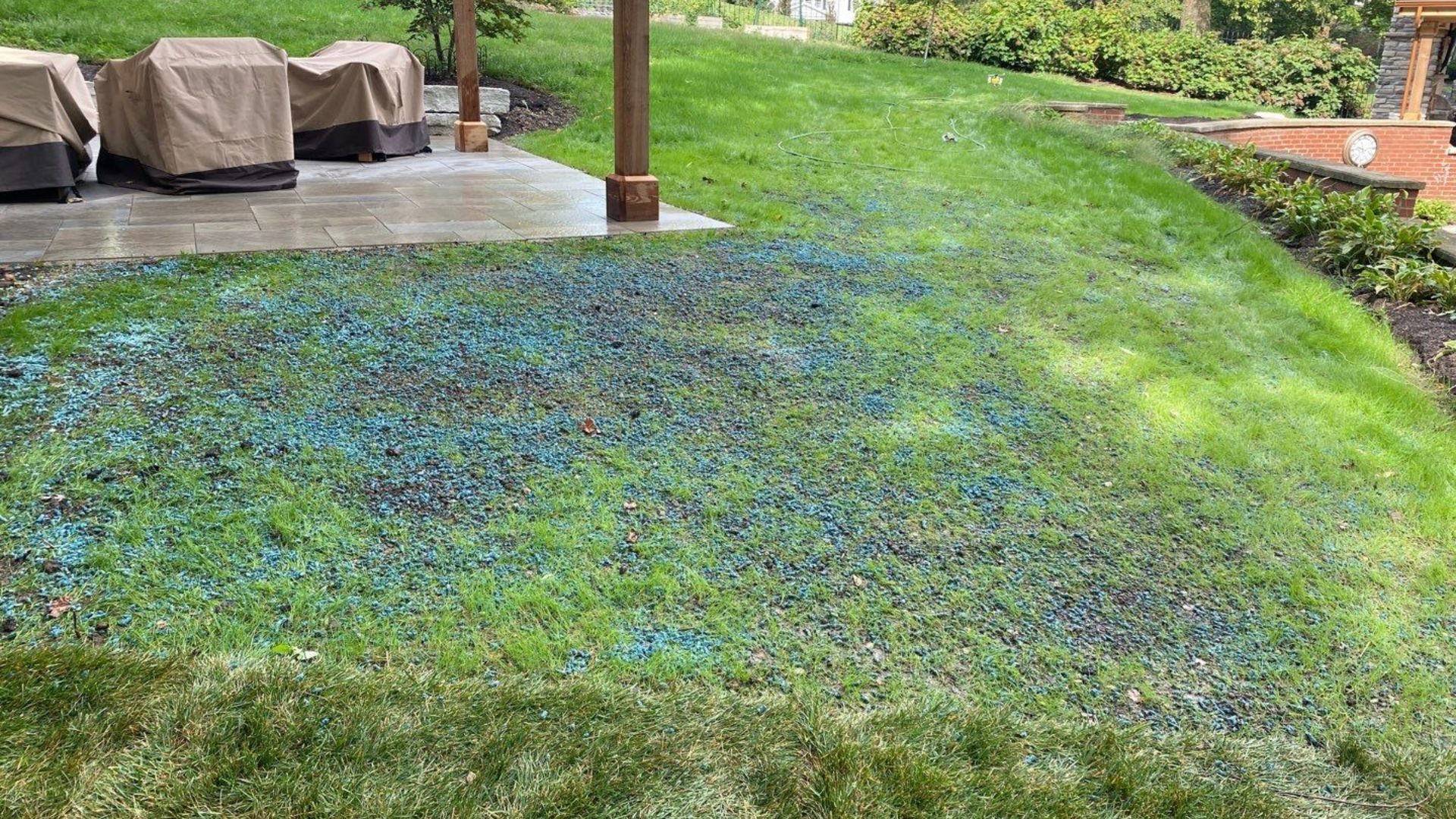
If done by inexperienced individuals or companies without proper planning, grading can actually worsen drainage problems or create new issues. This isn’t a con of grading itself, but a strong argument for hiring qualified professionals.
The Cons of NOT Doing Yard Grading
The risks of neglecting proper yard grading are often far more significant and costly than the initial investment in doing it right:
- Foundation damage: This is the most severe risk. Water pooling around your home can lead to hydrostatic pressure, cracks in your foundation and potentially thousands of dollars in structural repairs.
- Basement/crawl space flooding: Water intrusion can damage belongings, promote hazardous mold growth and compromise your home’s indoor air quality.
- Severe soil erosion: Uncontrolled water flow can wash away fertile topsoil, expose utility lines, damage plant roots and create unsightly and dangerous gullies across your property.
- Unusable outdoor spaces: Persistent puddles, muddy areas and uneven ground can render significant portions of your yard impractical for relaxation, play or entertaining.
- Pest infestations: Standing water creates ideal breeding grounds for mosquitoes and other undesirable insects, impacting your family’s comfort and health.
- Reduced property value: A poorly drained property is a major red flag for potential buyers, significantly diminishing your property value and making your home harder to sell.
- Safety hazards: Uneven terrain, muddy patches and unexpected dips can lead to trips, falls and injuries.
- Landscape deterioration: Plants may suffer from waterlogged roots or lack of moisture in high spots, leading to patchy lawns and struggling garden beds.
Invest in Your Foundation
Yard grading is a fundamental step in creating a beautiful, functional and long-lasting outdoor space. By strategically shaping the ground, you prevent costly problems, unlock the full potential of your outdoor areas and ensure your home’s value for years to come.
The Site Group team is ready to make your vision a reality. Let’s schedule a free, no-pressure consultation about your new landscape project. Not ready to hop on the phone? Prep these eight questions for us in advance.

